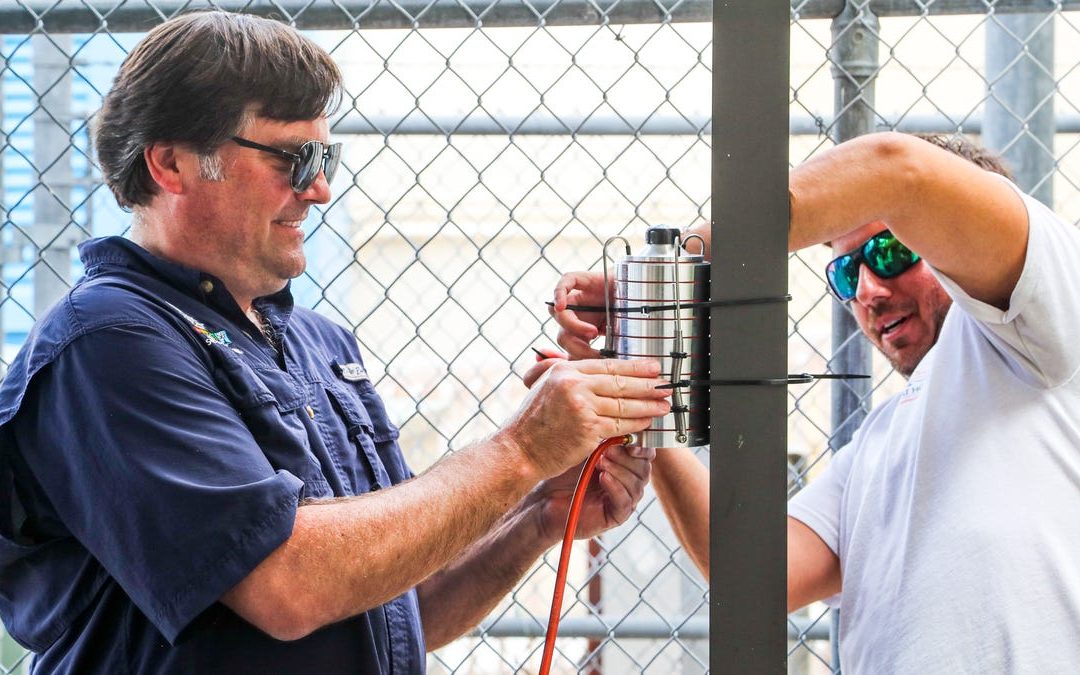Researchers are studying how toxic algae works its way through the human body and they continue to set their sights on Southwest Florida.
Their goal is to one day be able to predict blooms in the name of public safety.
Last week, Mike Parsons, a Florida Gulf Coast University professor and Blue-Green Algae Task Force member, and Adam Schaefer of Florida Atlantic University installed the second round of air quality sensors in Cape Coral, one of the areas hit hardest by a massive blue-green algae outbreak in 2018.
Calusa Waterkeeper John Cassani said the program is an important part of understanding a toxic water situation that we now know very little about.
“I would say that research on inhaling (toxic algae) is a critical thing now because you don’t have to be in the water or really be near the water to experience health risks,” Cassani said.
The sensors were installed in a canal network near Sun Splash water park and take measurements of the cyanobacteria. Similar devices found the toxin at FGCU’s Bonita Springs location and at a Cape Coral home.
Continue Reading

























